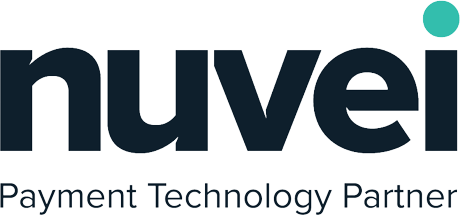Cloud Web Application Firewalls (WAF)
Up-to-Date Protection from Tomorrow’s Zero-Day Attacks.

Go Beyond Legacy Solutions
We at GlobalDots hunt for the most cutting edge and relevant technologies out there.
Once tested and found qualified we bring you the most certified innovative products out there for every pressing use case.

Your Benefits
Cover the full arc of threats relevant to your web application, and focus on those with real damage potential. Our experts are always up-to-date with the evolution of threats and have developed best practices from hundreds of cases.

We customize and configure your WAF to fully answer your threat map and minimize false positives. They will redo this with every major change to your assets to ensure ongoing protection and productivity.

Be easily compliant with PCI – we promote solutions with state-of-the-art automated reporting and policy enforcements, and will configure your WAF to do so effectively.

Protect all your web endpoints in one place. Discover a whole world of cutting-edge web security solutions in our mindfully-curated portfolio.

-
What is a cloud-based firewall?
A cloud-based firewall is a type of network security solution that provides firewall capabilities as a service, hosted and managed in the cloud rather than on-premises. These firewalls help to filter, monitor, and manage network traffic, protecting applications and infrastructure from cyber threats, while leveraging the scalability and flexibility of cloud environments. The key characteristics are:
- Scalability: Unlike traditional hardware-based firewalls, cloud-based firewalls can scale dynamically to handle varying traffic loads, making them suitable for organizations with fluctuating or growing network demands.
- Accessibility and Availability: Being hosted in the cloud, these firewalls are accessible from anywhere, providing continuous protection to globally distributed systems. Their high availability ensures minimal downtime, as they leverage the underlying redundancy and failover capabilities of cloud infrastructure.
- Centralized Management: They offer a unified dashboard for managing security policies and configurations across multiple environments, which simplifies administration, particularly for hybrid or multi-cloud architectures.
- Integration with Cloud Services: These firewalls are designed to integrate seamlessly with other cloud-native services, enhancing protection for cloud-based applications and microservices. They often come with built-in APIs that facilitate automated security management and deployment.
- Advanced Security Features: Modern cloud-based firewalls go beyond basic packet filtering and can include:
-
- Intrusion Prevention System (IPS) capabilities to detect and prevent malicious activity.
- Web Application Firewall (WAF) features to safeguard web applications from common threats like SQL injection, cross-site scripting (XSS), and other OWASP Top 10 vulnerabilities.
- Bot Management for mitigating automated threats and sophisticated bot attacks.
- DDoS Protection to help absorb and mitigate distributed denial-of-service attacks.
Like all security solutions, we are pros and cons:
- Pros:
- Cost-Effectiveness: The cloud model typically follows a pay-as-you-go pricing scheme, allowing organizations to avoid large upfront hardware investments.
- Ease of Deployment and Management: No physical hardware means quicker deployments and less maintenance, freeing up IT teams to focus on strategic initiatives.
- Adaptive Threat Intelligence: Leveraging cloud-native analytics and global threat intelligence feeds to adapt security measures based on evolving threats.
- Cons:
- Latency Concerns: Depending on the implementation, traffic may need to be routed through the cloud-based firewall, potentially introducing latency.
- Data Sovereignty: Organizations with strict data compliance requirements may face challenges related to data routing and storage.
- Configuration Complexity: Proper setup is crucial to avoid misconfigurations that could lead to security gaps.
-
What is the difference between cloud firewall and next generation firewall?
First of all, they are projected for different use cases. Infact:
Cloud Firewall is best suited for organizations that operate predominantly in the cloud and need protection for cloud-native applications and services. It’sIdeal for managing traffic between different cloud environments or for protecting public-facing web applications and APIs and offers straightforward scalability, making it a good fit for businesses with dynamic workloads that require fast, flexible adjustments.
Next-Generation Firewall (NGFW) is designed for broader and more comprehensive security use cases, including securing complex, mixed environments (on-premises, hybrid cloud). It could be a common choice for organizations with significant data center operations or those that require in-depth network traffic analysis and stringent security policie and it could provide more robust threat prevention capabilities, suitable for environments needing stringent security controls and granular visibility into network traffic.
Secondly, their core capabilities are different:
Cloud Firewall primarily offers protection for cloud-specific use cases like basic packet filtering, network address translation (NAT), and sometimes advanced capabilities like web application firewall (WAF) for protecting against application-level threats. It focuses on scalability and ease of use with streamlined, centralized management interfaces.
Next-Generation Firewall (NGFW): is more feature-rich and sophisticated, designed to address not only traditional packet filtering and stateful inspection but also advanced security threats. It offers deep packet inspection (DPI), intrusion prevention systems (IPS), application awareness and control, and SSL/TLS decryption, integrates threat intelligence and may include features like sandboxing for analyzing potential malware in a safe environment and it is capable of managing and detecting more complex threats, such as advanced persistent threats (APTs) and zero-day exploits.
-
What is a WAF in the cloud?
A Web Application Firewall (WAF) is a security solution designed to protect web applications by monitoring, filtering, and blocking malicious HTTP/S traffic between the internet and the web applications it serves. Unlike traditional firewalls that guard against broader network-level threats, a WAF specifically targets vulnerabilities and attacks at the application layer (Layer 7 of the OSI model).
It’s core functionalities are:
- Traffic Monitoring and Filtering: A WAF inspects HTTP/S traffic, identifying and blocking malicious activities such as injection attacks and cross-site scripting (XSS).
- Rule-Based Policies: WAFs use predefined security rules or policies to detect potentially harmful requests. These rules help distinguish between legitimate and malicious traffic.
- Real-Time Protection: They operate in real-time to prevent potential exploits before they reach the web application, offering immediate defense against newly detected threats.
- Protection Against OWASP Top 10 Threats: WAFs are particularly effective at mitigating common web application vulnerabilities identified in the OWASP Top 10, such as SQL injection, cross-site scripting (XSS), and security misconfigurations.
- Bot Management: Advanced WAFs include mechanisms for detecting and mitigating bot traffic, differentiating between benign bots (like search engine crawlers) and malicious ones (such as credential stuffing bots).
- DDoS Mitigation: Some WAFs have integrated Distributed Denial-of-Service (DDoS) protection, ensuring that web applications remain available during large-scale attacks.
- Virtual Patching: By applying security policies, WAFs can provide a virtual patching layer, temporarily protecting applications from known vulnerabilities until the underlying code can be fixed.
For these reasons the main use cases are related to protecting public-facing Web App, APIs or SaaS platforms.
-
How does a WAF work?
A WAF works by sitting between the client (user) and the web server, acting as a reverse proxy that intercepts incoming traffic and analyzes it before passing it on to the server. It follows a set of predefined rules that can:
- Allow legitimate traffic to pass through.
- Block or challenge requests that match a known pattern of malicious activity.
- Rate-limit or restrict traffic to mitigate abusive behaviors such as brute force attacks.
In this way, it could feasible to:
- Prevents Data Breaches: Helps stop attackers from exploiting vulnerabilities to gain unauthorized access or exfiltrate data.
- Enhances Compliance: Aids in meeting compliance requirements such as PCI DSS by adding a layer of application security.
- Reduces Risk from Known Vulnerabilities: Acts as an interim protective layer against known vulnerabilities before the underlying application can be patched.
Unfortunately there are some limitations like:
- Not a Substitute for Secure Code: While a WAF provides significant protection, it cannot replace secure development practices and proper patching.
- False Positives and Negatives: Poorly configured WAFs can either block legitimate traffic (false positives) or miss attacks (false negatives), affecting user experience or leaving vulnerabilities exposed.
- Performance Overhead: Depending on the configuration and traffic volume, a WAF can introduce latency, which may affect the user experience if not properly optimized.















